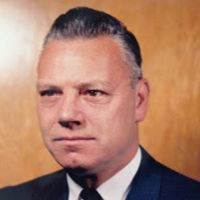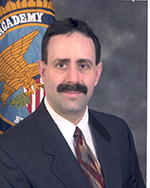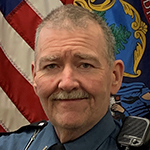It appears that the first “Capitol Policing” in Maine was performed by civil war hero, and former Governor, General Joshua Chamberlain in 1880. In January of that year, Governor Alonzo Garcelon (a Democrat) summoned General Chamberlain (a Republican and head of the Maine Militia) from Brunswick to Augusta to supervise a force that was to hold off a mob (led by Republican Senator James Blaine). The mob planned to overtake the State House by force. Senator Blaine apparently thought that his fellow Republican, Chamberlain, would take his side. Instead, despite numerous death threats, Chamberlain took the road of a peace-keeper. The General did not use the militia, apparently thinking it was not a military matter and would only make things worse. Instead, he sent the militia home and worked with Augusta police to “keep the peace”. The crisis lasted for twelve days until the Supreme Court decided the outcome of the disputed election that had caused the fervor to begin with. The court decided that Garcelon had lost the election to Daniel Davis.
More recently: From what State records show and from what various people remember, it appears that Capitol Police started under Governor Kenneth Curtis (1967-1975). Governor Curtis asked Robert Sears, a custodian and part-time police officer, to police the State House grounds. It is not clear what exact year that was, but it was early in Curtis’ first term (1967-1971) and before the first Chief of the Capitol Security Police Force was hired late in 1968. Officer Sears was hired as the first State House Police Officer and given the title of Building and Grounds Officer. He was issued a Game Warden style uniform with a patch that read “State House Police” (those patches are extremely rare). Officer Sears patrolled on a Cushman Scooter and served during weekdays. His role was to control parking around the State House and State Office Building and to provide for a measure of safety in the complex. At that time, most security services around the Capitol complex were handled by night watchpersons assigned to the Bureau of Public Improvements. These watchpersons patrolled State buildings and grounds after normal business hours to ensure security and to watch for fires or other hazards that could jeopardize State facilities.
 The first Capitol Police Chief, Joseph Farrand, was hired by Governor Curtis in late 1968. Farrand had just retired as the City of Lewiston’s Police Chief. Farrand’s “fifteen minutes of fame” came in the media whirlwind surrounding the 1964 controversial Cassius Clay and Sony Liston Heavy Weight Championship fight that was held in Lewiston. Under Chief Farrand, the Capitol Security Police Force added more security guards to man the Cultural Building when that was opened in 1971. In the late seventies, after the Central Maine Power bombings, the governor made those security guards into Capitol Security Police Officers. In 1977, according to the State’s Annual Reports, the “Capitol Security Police Force” was moved from the Bureau of Public Improvements to the Department of Public Safety. The unit started being called the Bureau of Capitol Security in 1978 and remained that until September 12, 2009.
The first Capitol Police Chief, Joseph Farrand, was hired by Governor Curtis in late 1968. Farrand had just retired as the City of Lewiston’s Police Chief. Farrand’s “fifteen minutes of fame” came in the media whirlwind surrounding the 1964 controversial Cassius Clay and Sony Liston Heavy Weight Championship fight that was held in Lewiston. Under Chief Farrand, the Capitol Security Police Force added more security guards to man the Cultural Building when that was opened in 1971. In the late seventies, after the Central Maine Power bombings, the governor made those security guards into Capitol Security Police Officers. In 1977, according to the State’s Annual Reports, the “Capitol Security Police Force” was moved from the Bureau of Public Improvements to the Department of Public Safety. The unit started being called the Bureau of Capitol Security in 1978 and remained that until September 12, 2009.
 Donald Suitter became the agencies’ second Chief in 1979. He was Chief until his retirement in 2006, after 39 years of service to Capitol Security. At points during Chief Suitter’s tenure, there were 28 watchmen, a secretary, one sergeant, and a high of 13 police officers in the Bureau. In 1982, the Augusta Mental Health Institute and grounds were added to Capitol Security’s responsibility. In 1990, the four remaining watchmen positions were moved to Capitol Security from the Bureau of Public Improvements. With this move, Capitol Security began covering the State properties in Hallowell. Capitol Police officers continued to wear the gold outlined patch until 1989, when it was replaced with the Capitol Security patch as shown here. The officer’s official title remained Capitol Police Officers. In 2004, budget cuts forced the Bureau to discontinue providing 24/7 police coverage. By the end of Chief Suitter’s tenure in 2006, budget cuts had reduced the force to three watch persons, four police officers, a sergeant, the chief, and a part-time secretary.
Donald Suitter became the agencies’ second Chief in 1979. He was Chief until his retirement in 2006, after 39 years of service to Capitol Security. At points during Chief Suitter’s tenure, there were 28 watchmen, a secretary, one sergeant, and a high of 13 police officers in the Bureau. In 1982, the Augusta Mental Health Institute and grounds were added to Capitol Security’s responsibility. In 1990, the four remaining watchmen positions were moved to Capitol Security from the Bureau of Public Improvements. With this move, Capitol Security began covering the State properties in Hallowell. Capitol Police officers continued to wear the gold outlined patch until 1989, when it was replaced with the Capitol Security patch as shown here. The officer’s official title remained Capitol Police Officers. In 2004, budget cuts forced the Bureau to discontinue providing 24/7 police coverage. By the end of Chief Suitter’s tenure in 2006, budget cuts had reduced the force to three watch persons, four police officers, a sergeant, the chief, and a part-time secretary.
 In 2006, Russell Gauvin, a retired Portland Police Captain, was hired by Public Safety Commissioner Michael Cantara as the third Capitol Police Chief. In 2007, under the leadership of Chief Gauvin, and with the support of Public Safety Commissioner Anne Jordan, the Bureau began efforts to modernize and become a full service police agency. The time-line at the end of this narrative shows various incremental steps that were taken along the route to meeting this goal. Those steps included computerization, increased training, and equipment upgrades. With a larger law enforcement role, Chief Gauvin had a “police” rocker added to the uniform patch.
In 2006, Russell Gauvin, a retired Portland Police Captain, was hired by Public Safety Commissioner Michael Cantara as the third Capitol Police Chief. In 2007, under the leadership of Chief Gauvin, and with the support of Public Safety Commissioner Anne Jordan, the Bureau began efforts to modernize and become a full service police agency. The time-line at the end of this narrative shows various incremental steps that were taken along the route to meeting this goal. Those steps included computerization, increased training, and equipment upgrades. With a larger law enforcement role, Chief Gauvin had a “police” rocker added to the uniform patch.
In 2009, the 124th Maine Legislature passed LD 915, which, among other changes, changed the name of the Maine Bureau of Capitol Security to the Maine Bureau of Capitol Police. Capitol Police’s jurisdiction originally was all state owned or controlled property in Augusta. The 124th Legislature gave the Commissioner authority to expand that jurisdiction statewide in the same LD that changed the Bureau’s name to the Bureau of Capitol Police. Governor Baldacci signed the bill into law in June of 2009 and LD 915 was enacted as Public Law, Chapter 317. In 2009, in accordance to the authority in PL Chapter 317, Commissioner Anne Jordan gave all fully trained police officers of the Bureau of Capitol Police the authority to enforce all State laws anywhere in the State of Maine.
 With the name change, long-time Capitol Police Sergeant Robert Elliot took input from various people and designed the new uniform shoulder patch that Capitol Police adopted. The patch includes a drawing of the Maine State House and incorporates the Seal of the Department of Public Safety. The patch shows our role of protecting Maine’s Seat of Government while also showing our placement within the Department of Public Safety. Capitol Police forces in other states fall under the Legislature, General Services, Secretary of State’s Office or a variety of other organizational structures.
With the name change, long-time Capitol Police Sergeant Robert Elliot took input from various people and designed the new uniform shoulder patch that Capitol Police adopted. The patch includes a drawing of the Maine State House and incorporates the Seal of the Department of Public Safety. The patch shows our role of protecting Maine’s Seat of Government while also showing our placement within the Department of Public Safety. Capitol Police forces in other states fall under the Legislature, General Services, Secretary of State’s Office or a variety of other organizational structures.
In 2011, the City of Augusta’s Police Department (APD) was under increased pressure to reduce demands on their patrol force. An International Association of Chiefs of Police study indicated the need to shed workload on the City’s patrol force. APD Chief Robert Gregoire asked Capitol Police Chief Russell Gauvin to decrease Capitol Police’s reliance on APD for response to police issues on State properties, with a goal of Capitol Police eventually handling all police issues on State properties in Augusta. In a step toward that goal, and in an effort to increase the presence of Capitol Police officers, a retiring watchman’s position was changed to a police officers position in 2011. The number of sworn officers was increased to seven (including the sergeant and chief’s positions). While Capitol Police still needed to rely on APD response, at that point, that response would normally only be needed between midnight and 6 AM, the hours the Capitol was patrolled by watch persons.
In 2011, the 125th Legislative Council authorized weapons screening for people entering the State House. The Legislature added the head count required to accomplish that task. Capitol Police’s staffing was increased by one police officer and four security screeners. State House screening started on January 18, 2012. Capitol Police staffing at that time was: one Chief, one sergeant, six police officers, four screeners, two watchpersons and one part-time secretary.
In 2013, Governor LePage authorized the addition of four Capitol Police Officers and one Capitol Police Sergeant to the Bureau in order to staff a unit around the clock at Riverview Psychiatric Center (RPC). This unit was put in place to be a resource to the staff at RPC and to be part of the team working to keep everyone safe and to lower the number of assaults and other potentially dangerous events. Capitol Police staffing at that time increased to: one Chief, two sergeants, ten police officers, four screeners, two watchpersons and one part-time secretary.
Timeline
Robert Sears, a custodian and part-time local police officer, was asked by Governor Kenneth Curtis to police the State House grounds. He was issued a Game Warden style uniform with a patch that read “State House Police”. Officer Sears patrolled on a Cushman Scooter and served during weekdays to control parking around the State House and State Office Building and to provide for a measure of safety in the complex.
The Capitol Security Police Force was formed within the Bureau of Public Improvements. Former Lewiston Police Chief Joseph Farrand was hired to head the new agency. He oversaw Officer Sears and the crew of watchpersons who worked after business hours.
1971 A new Cultural Building was built just south of the State House. This new building housed the State’s Museum, Library and Archives. More Security Guards were hired by the Bureau of Public Improvements to patrol inside the building.
1977 In response to the bombings of several public buildings in New England and the Central Maine Power Company in Augusta, the guards who had been covering the Cultural Building were sent to reserve officer training at the Maine Criminal Justice Academy. The Bureau of Capitol Security was formed and transferred to the Department of Public Safety. The newly trained guards became Capitol Security Police Officers and started patrolling the Capitol Complex.
1980 Chief Farrand retired. Sergeant Donald Suitter was promoted and became the second Chief.
1982 The Augusta Mental Health Institute and grounds were added to the Bureau’s patrol area. Jurisdiction for Bureau officers was limited to the Capitol Area, as was defined in statute. Two Capitol Security Police Officers were added to the force, bringing the compliment to nine officers, a sergeant and the chief.
The Night Watchpersons, who had been assigned to the Bureau of Public Improvements, were reassigned to Capitol Security. With this addition, the security of the State offices located in the City of Hallowell became Capitol Security’s responsibility. Capitol Security Police Officers were issued Uniform Traffic Tickets and given training to enforce traffic violations at the State Complexes in Augusta.
The Bureau replaced their outdated .38 caliber revolvers with new .9mm Berretta semi-automatic pistols. Bullet resistant vests were issued to officers.
The Bureau’s force was tested when State Government ground to a halt during a budget crisis and was shut down for several days. The State House was swarmed by angry protestors. The labor union representing State employees organized a “tent city” in Capitol Park as a form of protest.
Due to decreases in the Bureau’s budget, the number of Capitol Security Police officers was reduced from 9 to 6 and the number of watchpersons was cut to 2.
1994 Officer Robert Sears retired after more than 47 years of State service. The last 27 of which were spent policing the Capitol Area.
1999 The Bureau replaced the 9 mm Beretta handguns, which had been carried since 1991, with .45 caliber HK handguns.
With growing safety concerns following the events of September 11, 2001, officers were assigned to protective details near the House and Senate chambers whenever either was in session.
Officers were assigned to posted positions in the lobbies of the State House and the Cross State Office Building.
2002 The Legislature and the Maine Criminal Justice Academy increased the training requirements for Capitol Security Police Officers by 140 hours to include such areas as: Restraint and Control Techniques, Mechanics of Arrest, CPR and First Aid, Bomb Search and Recognition, Active Shooter and Coping with Mental Illness, among others.
2004 In preparation for weapons screening should it become needed, Walk Through Metal Detectors, a X-Ray Inspection Unit and other equipment was purchased by the Legislative Council with funds from a Federal Grant.
2004 Due to further reductions in staff, the Bureau’s officers were no longer able to provide around the clock coverage of the complexes. In addition, the officer’s position that had been assigned to the Cross Building was eliminated. This left only non-sworn watchpersons to patrol during the overnight hours. Budget cuts had reduced the force to three watch persons, four police officers, a sergeant, the chief, and a part-time secretary.
Chief Suitter retired after serving as Bureau Director for 25 years. He was replaced by former Portland Police Captain Russell Gauvin, who became the Bureau’s third Chief.
Bureau officers were trained on the use of, and were issued, ASP collapsible batons for the first time.
A computerized dispatch and records management system, with onboard laptops in the cruisers, was added to enhance the Bureau’s ability to provide professional services.
The Bureau licensed a separate radio frequency and purchased recording equipment for the radio channels and telephone lines in Building Control. Previously, the Bureau shared a radio channel with the trades people and custodians within the Bureau of General Services.
The 124th Legislature passed LD 915, and Governor Baldacci signed the bill into law in June of 2009. LD 915, which was enacted as Public Law, Chapter 317, changed the name of the Bureau to Capitol Police. This was done to better reflect the law enforcement role and responsibilities of the agency.
2009 LD 915 also enabled the Commissioner of Public Safety to expand Capitol Police’s jurisdiction so that fully trained Capitol Police officers could enforce any Maine law anywhere in the State of Maine. Commissioner of Public Safety Anne Jordan gave all fully trained police officers of the Bureau of Capitol Police that expanded jurisdiction and authority.
With the name change, long-time Sergeant Robert Elliot took input from various people and designed the new uniform shoulder patch that Capitol Police adopted. The patch includes a drawing of the Maine State House and incorporates the Seal of the Department of Public Safety. It shows our role of protecting Maine’s Seat of Government while also showing our placement within the Department of Public Safety.
Each Capitol Police Officer was issued a .9mm Ruger PC9 patrol rifle. This was done to better enable officers to deal with “Active Shooter” and other threats that might be leveled against Maine’s Seat of Government.
Commissioner of Public Safety, John Morris authorized continuation of the authority for all fully trained police officers of the Bureau of Capitol Police the authority to enforce all State laws anywhere in the State of Maine.
2011 APD Chief Gregoire told Capitol Police that APD needed to stop providing routine police service for State properties in Augusta. With the retirement of a watchperson, Governor LePage gave approval to upgrade that
position to a Capitol Police officer’s position. With that addition, Capitol Police could provide law enforcement coverage from 0600-2400 daily. With this change, APD agreed to continue respond to calls from midnight until 0600 hours until additional Capitol Police officers could be added in future budgets.
2011 The “Occupy Wall Street” protest movement came to Augusta, Maine as Occupy Augusta. The group took up camp in Capitol Park without permission for 55 days. The group sued the State in U.S. Federal Court claiming they had a right to stay in the Park. The group was removed from the Park by Capitol Police after a Federal Judge ruled in favor of the State.
The 125th Legislative Council directed, and provided funding for, Capitol Police to begin entry screening for weapons and dangerous items at the State House. One additional Capitol police officer and four security screeners were hired to perform the screening. Equipment had already been purchased in 2004.
On January 18th, Capitol Police began the regular screening of people and items entering the State House under the policies of the Bureau and protocols of the Legislative Council.
Capitol Police officers were trained on the use of, and were authorized to carry, TASER Electronic Control Devices for the first time. TASER X-26 ECD’s were purchased with funds from the Public Safety Commissioner’s
Office.
Violence and assaultive conduct at Riverview Psychiatric Center (RPC) increased and patients and staff were being injured regularly. RPC tried hiring Corrections Officers to work in the hospital to help control the assaultive Behavior. This caused significant issues in the Hospital’s license review and they lost some Federal Funding. With Public Safety Commissioner John Morris’ support, Capitol Police proposed establishing a new police unit at RPC to provide 24/7 coverage similar to the coverage provided schools by School Resource Officers. Governor Paul LePage agreed to the proposal and authorized a financial order to hire four additional Capitol Police officers and one additional Capitol Police sergeant.
The authorized strength of Capitol Police officers increased to handle the RPC Unit. As of January 2014, the Bureau’s authorized strength was as follows: One Chief, two Sergeants, 10 police officers, four security screeners, two watchpersons, and one part-time administrative assistant.
2014 Officer Mark Brown was promoted to the rank of Sergeant. This marked the first time that the Bureau had more than one supervisory position.
2014 All Sworn members attended training and were certified in “Mental Health First-Aid”. The training program was conducted by the National Alliance for the Mentally Ill.
2014 Upon the Departure of Sgt. Brown, Officer Steven Trahan was promoted to the rank of Sergeant and was charged with overseeing the Bureau’s operations at the Riverview Psychiatric Center.
2016 For the first time, a Lieutenant position was created by the Bureau of Human Resources. Sgt. Robert Elliot was promoted to the new position and became the first Capitol Police Lieutenant.
Each Officer was issued and trained in the use of Windham Weaponry AR15 style patrol rifles with electronic optics. These Maine made rifles replaced the .9mm Ruger rifles that had been carried by Officers since 2010.
The largest rally/protest in recent history occurred between the State House and the Cross State Office Building. A crowd of approximately 7000 people gathered as part of the National Woman’s March. One CP Officer was assaulted by an attendee.
2017 All Officers attended two days of training and were certified in Advanced Law Enforcement Rapid Response Techniques to help prepare them to respond to an active shooter crisis.
2017 Commissioner Morris added a full time administrative associate into the FY18 budget request. While the computerization work continued, and the Bureau was approaching the goal of going near paperless, the growth of the Bureau and the demands of running a full law enforcement agency led to the need for more administrative support.
2020 Capitol Police Officers were issued body cameras to enhance transparency and protect the safety and welfare of officers and the public while improving the reliability of investigations and to assist in prosecutions.
2020 Officers were provided with and trained in the use of Narcan® /Naloxone to prevent and reduce fatal opioid overdoses.
2021 Chief Russell J. Gauvin retired from Capitol Police after 15 years of dedicated service to the Bureau.
2021 Chief Matthew M. Clancy joined Capitol Police. Clancy, a native of Rockland, Massachusetts, was a frequent visitor to Maine. Clancy has spent more than 35 years in law enforcement, 19 of those as a police chief. He most recently served in Plympton, Massachusetts. Before his interim position in Plympton, he served as the Chief of Police in Duxbury, Massachusetts. Clancy is also an Adjunct Professor at Bridgewater State University. He also served for more than 10 years on the Board of Directors of the Massachusetts Police Accreditation Commission.
2022 The Capitol Police Security Screeners changed their uniforms to include gray shirts, Department of Public Safety patches and Screener badges. This is the first change to their uniforms since 2011.